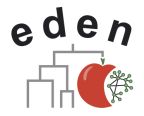Implications of mating system for genetic diversity of sister algal species: Fucus spiralis and Fucus vesiculosus
| by Perrin C, Daguin C, Van de Vliet M, Engel CR, Pearson GA, Serrão EA |
| European Journal of Phycology 42 (2007) , pp. 219-230 |
| Output type: publication |
The implications of mating system for genetic diversity were assessed in the sister species Fucus spiralis and F. vesiculosus using a combination of ten microsatellite markers. Five new microsatellite markers specific for F. spiralis were developed in order to complement and ascertain the results acquired using five microsatellite loci previously developed by Engel et al. (2003, 2005). Results revealed that F. spiralis reproduces mostly through self-fertilisation along its distribution on the North East Atlantic coast. This was suggestive of a selective advantage of autogamy for increasing mating probability on exposed shores,thus increasing its capacity as founder of new sites, and by enabling the specialisation of this species to its stressful environment. However, the very low level of genetic diversity associated to the high selfing rates in this species might be associated with a reduced ability to adapt to environmental changes. Higher level of genetic diversity was observed in the outcrossing species F. vesiculosus. Some cases of significant biparental inbreeding in this species were indicative of short gamete dispersal or mating of spatially or temporally structured populations.


